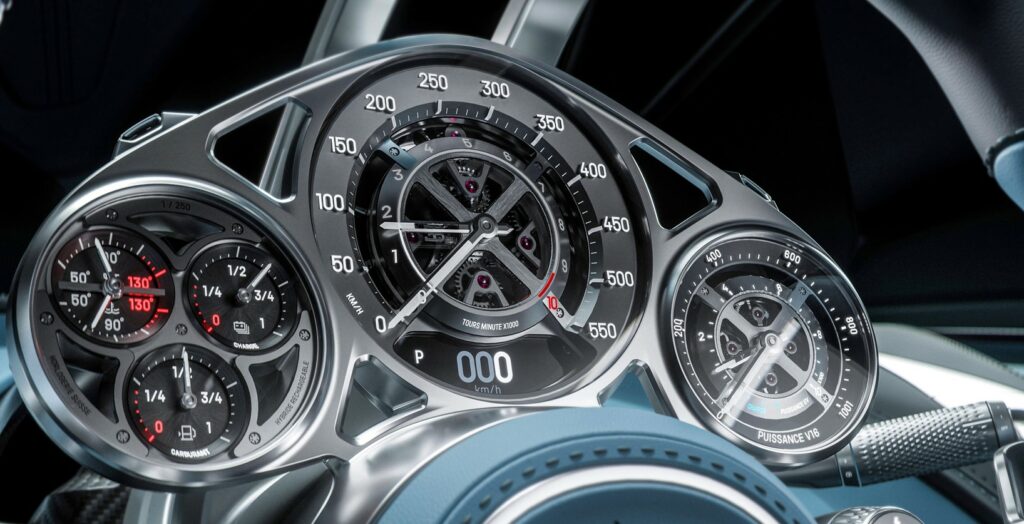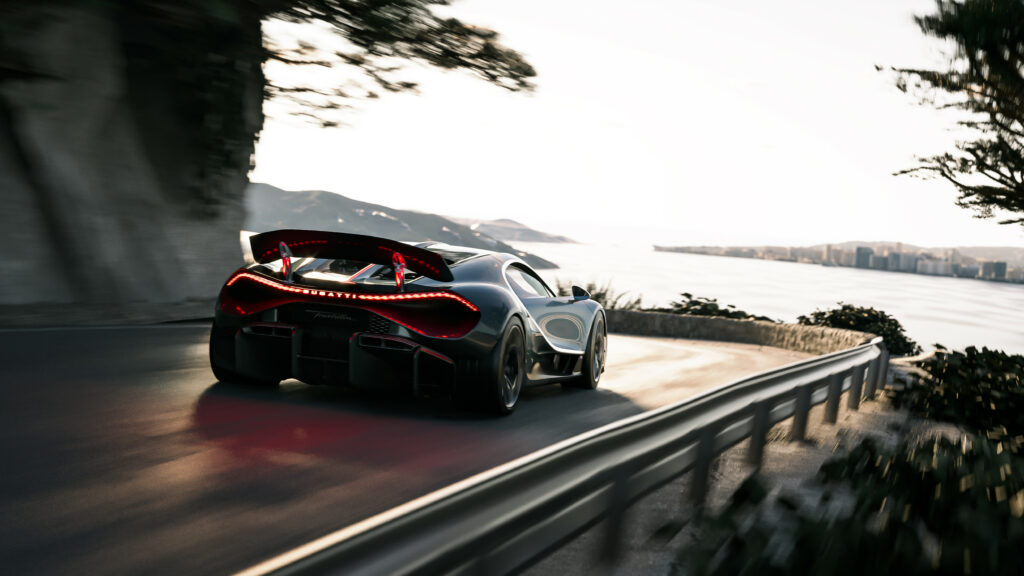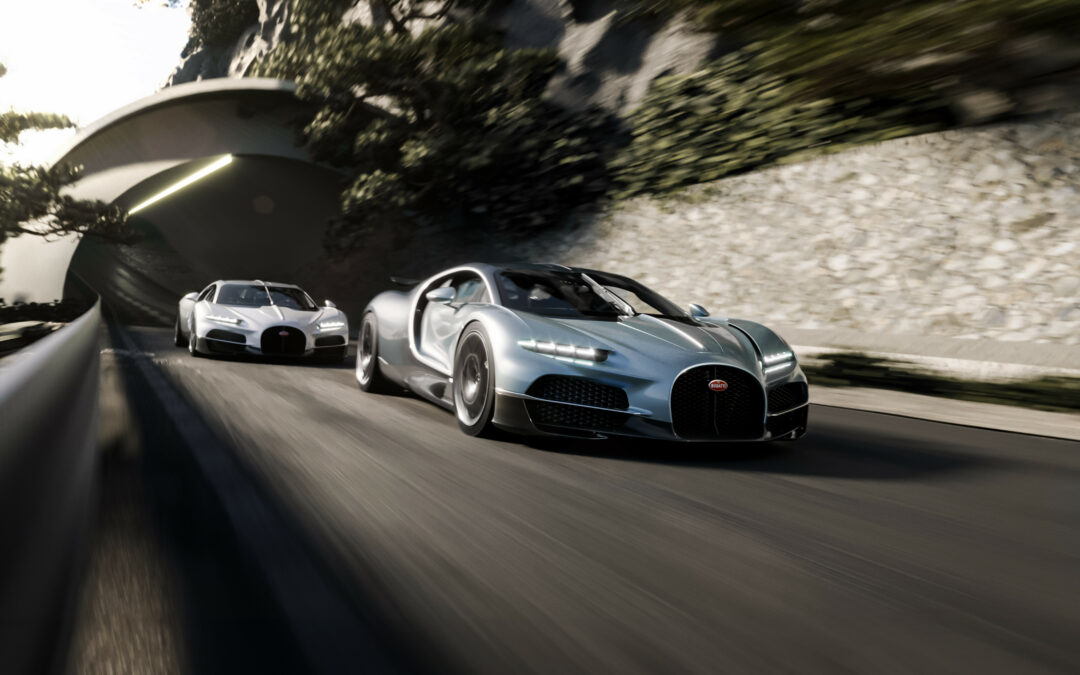Bugatti has unveiled its new €3.8 million ($4 million) motor, the Bugatti Tourbillon. The hybrid vehicle pulls in 1,000 horsepower (hp) from its 8.3-litre V16 combustion engine and 800 hp from its two electric motors, totalling 1,800 horsepower.
The Tourbillon succeeds Bugatti’s 2016 1,500 hp car: the Chiron, powered by a 8.0 litre quad-turbo W16 engine. It also marks 20 years since Bugatti revived itself with the launch of its luxury 1,001 hp hyper sports car: the Veyron
With Bugatti moving away from its W16 engine for the first time in two decades, it also chose to lean away from its tradition of naming core models after legendary Bugatti racing drivers of the past. Instead, the Tourbillon name was chosen; a French word meaning ‘whirlwind’ and also references the revered tourbillon mechanism in watchmaking where accuracy is attained through complex design. The name encapsulates the model’s spirit while also giving a slight nudge to Bugatti’s French heritage where it was founded by Ettore Bugatti in 1909 in Molsheim, France.
As the tourbillon has been timeless in watchmaking, the luxury car developer has designed a car that will stand the test of time.
“Beauty, performance and luxury formed the blueprint for the Tourbillon; a car that was more elegant, more emotive and more luxurious than anything before it,” said Bugatti CEO Mate Rimac. “Quite simply, incomparable. And just like those icons of the past, it wouldn’t be simply for the present, or even for the future, but Pour l’éternité – for eternity.”

The interior of the car carries on the theme of watchmaking with its centrepiece being an instrument cluster designed and built with the expertise of Swiss watchmakers. The instrument cluster is made up of more than 600 parts and constructed from titanium as well as gemstones such as sapphires and rubies. The centre console is a blend of crystal glass and aluminium, revealing the intricate workings of the switches and the engine start ‘pull’ lever that it hosts. This intricately designed piece epitomises the car’s luxurious essence.
The car’s exterior design was not only built with opulence in mind, but was bolstered by the principles of honing its aerodynamics as well as its thermodynamics. “The creations of Ettore and Jean Bugatti are ingenious in their aerodynamics, innovation and enduring beauty,” said Bugatti director of design Frank Heyl. “We draw from the Bugatti Type 35, where the whole shape of the car was guided by the shape of the horseshoe grille, tapering back into this streamlined fuselage shape.

“We find inspiration in the Type 57SC Atlantic – the S stood for Surbaissé, which essentially meant lowered – bringing down the frontal area, lowering the roofline, lowering the driver and creating this wonderful stance and proportion. That’s something that was very important for us, carefully curating the placement of volumes that are both functional but also supporting the extreme proportions of the car.
“If the car is lower, it looks wider and the size of the wheels are emphasized; it looks like there is tension in the muscles, a posture ready to pounce. Every design decision is geared towards creating a sense of speed even at a standstill.”
The car also features a suspension arm 3D-printed in aluminium, which has saved around 45% in suspension weight in comparison to the Chiron model. The rear also features an AI-developed 3D-printed hollow airfoil arm to enhance the vehicle’s dynamics and aerodynamic performance.

“It is crazy to build a new V16 engine, to integrate with a new battery pack and electric motors and to have a real Swiss-made watchmaker instrument cluster and 3D-printed suspension parts and a crystal glass centre console,” commented Rimac. “But it is what Ettore would have done, and it is what makes a Bugatti incomparable and timeless. Without that kind of ambition, you might create a great hyper sports car, but you wouldn’t create an icon Pour l’éternité’.”
The Bugatti Tourbillon has now entered its testing phase with prototypes already on the road. A total of 250 examples will be built with deliveries anticipated for 2026. Hand-assembly will take place at the Bugatti Atelier in Molsheim, harking back to Bugatti’s origins.

